![]()
![]()

Electric Potential
|
Name the charges.
June 2016 |
Show Me The Physics Lesson
Show Me The Physics
YouTube Channel
Have a little Physics with your Pancakes
Review

I.) Electric Potential - work needed or energy acquired when a positive charge is moved from infinity to a certain point in an electric field.
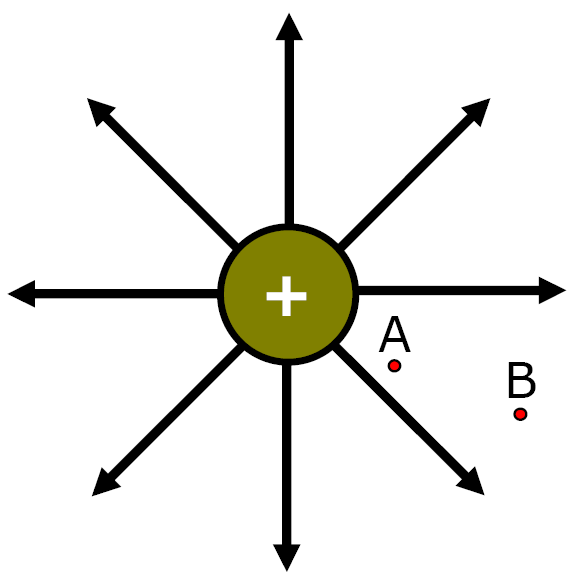
II) Potential Difference (Voltage) potential energy difference between 2 points in an electric field per unit of charge
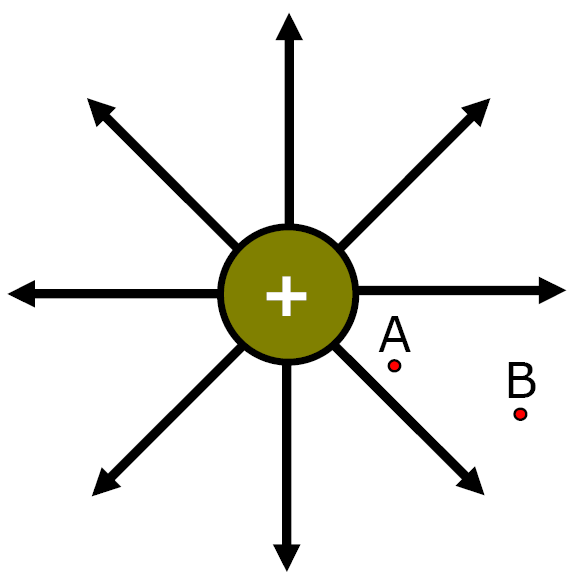
A) Potential Difference, Energy & Work
As a charge moves through an electric field it gains PE or KE

If "Opposites" move
Closer
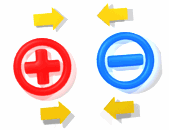
Gain KE or PE?
They Gain KE
If 'Opposites' Separate
Gain KE or PE?
They Gain PE
If "Likes" Separate

Gain KE or PE?
They Gain KE
If 'Likes' move closer
Gain KE or PE?
They Gain PE
1) Equation #1
Charge q moving between 2 points in a field
| V = | W | (Joules) |
| q | (Coulombs) |
W = work done against field or energy acquired working with field (Joules or eV)
eV = electronVolts
(small energy unit)
q
- amount of charge moving through field (Coulombs)
V
- Potential Difference (volts)
| AP Physics Charge q moving between 2 points in a field UE = PE (W)
UE = qV = PE between between 2 charges

(Scalar) |
|
Ex) It takes 6 J of work to move 2 C of charge between 2 points in an electric field.
What is the potential energy difference (V) between these points? |
Ex) It takes 6 Joules of work to move 2 coulombs of charge between 2 points in an electric field. What is the potential energy difference (voltage) between these 2 points?
| V = | W | (Joules) |
| q | (Coulombs) |
| V = | 6 Joules |
| 2 Coulombs |
V = 3 Volts or J/C
2) Potential difference Eq. #2
| V = | W | (eV) |
| q | (elementary charges) |
W = work done against field
or energy acquired working with field
(Electronvolts = Ev)
Electronvolt
� small energy unit
= 1.6 x 10-19 J
q - amount of charge moving through field (# elementary charges)
V - Potential Difference (volts)
|
Ex) It takes 10
eV to move 2 elementary charges from |
Ex) It takes 10 eV to move 2 elementary charges from one point to another in an electric field. Find the potential difference between these points.
| V = | W | (eV) |
| q | (elementary charges) |
| V | = | 10 eV |
| 2 elementary charges |
V = 5 Volts
|
Ex) +2
elementary charges acquire
16 joules of energy when they move between 2
points in an electric field. What is the potential difference (voltage) between these two points in the field? |
Ex) +2 elementary charges acquire 16 joules of energy when they move between 2 points in an electric field. What is the potential difference (voltage) between these two points in the field?
Units don't match!!!
elementary charges, eV Joules/Coulombs
+2 elementary charges =
3.2 x 10-19 C
| V = | W | (Joules) |
| q | (Coulombs) |
| V = | 16 J |
| (3.2 x 10-19 C) |
V = 5.0 x 1019 Volts
or J/C
| Ex) If 4.8 x 10-17 joules of work is required to move an electron between 2 points in an electric field, what is the electric potential difference between these points? |
|
|
|
| a) 3.0 x 102 V | b) 4.8 x 10-17 V |
| c) 1.6 x 10-19 V | d) 4.8 x 102 V |
|
Ex) If
4.8 x 10-17
joule of work
is required to move an
electron between 2 points in an
electric field, what is the electric
potential difference between these points? |
|
|
|
|
| a) 3.0 x 102 V | b) 4.8 x 10-17 V |
| c) 1.6 x 10-19 V | d) 4.8 x 102 V |
W = 4.8 x 10-17 Joule
V = ?
q = ?
Hint: The charge in this problem is an electron
q = 1.6 x 10-19
C
| V = | W | (Joules) |
| q | (Coulombs) |
V = 4.8 x 10-17 J / (1.6 x 10-19C)
a) 3.0 x 102 V
AP Physics
Electric Field - Parallel Plates
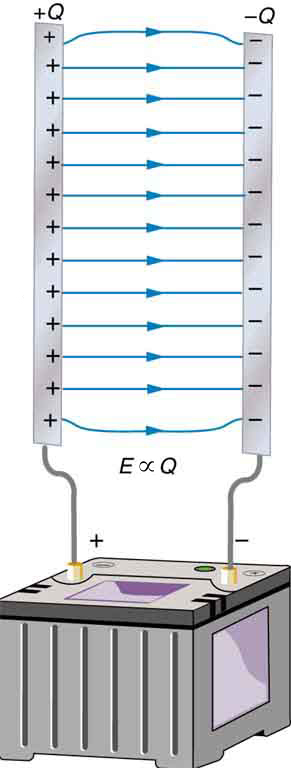
E = V/d = F/q

Conducting plates are 0.04 m apart, as shown
above. Point P is located 0.01 m above the lower plate.
a. The electric potential at point P is
(A) 10 V (B) 8 V
(C) 6 V (D) 4 V (E) 2 V

(A) 10 V (B) 8 V
(C) 6 V (D) 4 V
(E) 2 V

b. The magnitude of the electric field at point P is
(A) 800 V/m
(B) 600 V/m
(C) 400 V/m
(D)
200 V/m
(E) 100 V/m

![]()
Capacitance
Capacitor -
a) Oppositely charged plates connected to a voltage source
b) used to store charge
c) once capacitor is charged, voltage source can be removed
Q = CV
Q - charge
V - Voltage
C - Capacitance - Farads
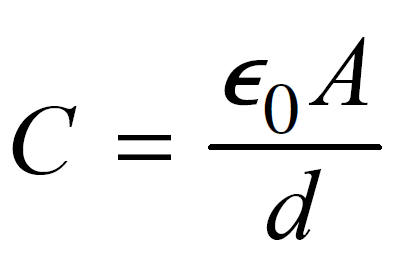
A = Area of each plate
d - distance between plates
E0 = epsilon (ref)
= 8.84 x 10-12 C/Vm
![]()
![]()
�Tony Mangiacapre.,
- All Rights Reserved [Home]
Established 1995
Use any
material on this site (w/ attribution)

